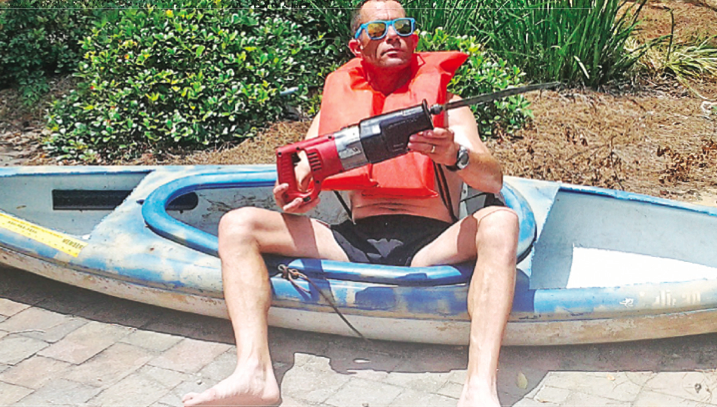[dropcap]I[/dropcap]f you are an inshore adventure angler who aims to get the most function out of the least amount of watercraft, we have at least two things in common:
1. We are both carbon-based life forms (assuming this magazine’s distribution is still limited to our solar system).
2. We both get frustrated at the cramped capacities of the smallest kayaks.
Let me get more specific about that second item. With all due respect to true kayak aficionados who happily plunk down a grand or more for well-appointed, fancy-pants paddlecraft, I confess that I pinpoint flotsam that can be had for 150 bucks or less on craigslist. This limits me
to 10 foot toyboats, originally purchased at chain stores by weekend warriors who soon find themselves reciting the mantra that explains all manner of remorse: “It seemed like a good idea at the time.” At least that’s what they tell me when I show up with a handful of twenties and a wad of bungee cords for strapping their plastic disasters to my Ford Focus Station Wagon. I own four of these little buggers, at a total cost of one decent float. Why not ditch them all and get one really nice aquatic ride? Glad you asked!
It really comes down to knowing what you want from a kayak. Those who seek a vessel that allows them to comfortably cover a lot of water, with plenty of room for gear, have dozens of drool-inducing choices. I already have mine picked out. I’m ordering it the day after I win the lottery. On the other hand, for sloggers who primarily hike their fishing territory, and employ kayaks only to ferry them to wading spots, small, light, and disposable is the way to go. Three of my four dinky boats are buried deep in marsh grass on coastal islands that are accessible on foot at low tide. I use them to fish full tide cycles. I sometimes lose these beater boats, due to storm surge or inability to remember where I stashed them (recall how you feel after coming out of Publix and walking down multiple parking lot rows in search of your car. Now, imagine those rows are endless side creeks off the Econfina River. Uh-oh.). But, easy come, easy go.
And the fourth member of my cheap-skate regatta? I keep one as a car topper, for navigating St. Marks National Wildlife Refuge creeks. Initially, my undersized tiny downside is that the kayak now sinks Pelican sit-inside yak drove me bonkers, as I could never find a way to cram two rods, a cast net, a bait bucket, and a fish bag on board. But then I experienced a two-word epiphany: reciprocating saw!
Channeling the spirit of a “Tool Time” rerun, I carved giant hunks, fore and aft, out of my kayak deck. This shaved six pounds from the boat’s weight, and doubled the stowage capacity. The only on windy days, from water splashing over the bow. Like that matters to a wader!
Note to kids, regarding power tools and kayaks: Don’t try this at home. Try it in the parking lot of an emergency medical center. Also, memorize both the protocol for operating a sharp electric saw, AND your blood type.
[easy-social-share]

